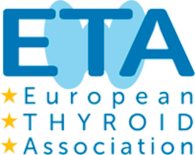Findings of the first large-scale study offering guidance on thyroid nodule evaluation in patients over age 70 support conservative management, showing most thyroid nodules 1 cm or larger in older patients confirmed with ultrasound or fine needle aspiration (FNA) are benign. And the few that turn out to be high-risk thyroid cancers are very likely to also be identified on imaging and cytology prior to surgery.
The results are important amid ongoing concern about diagnostic surgeries on thyroid nodules that often turn out to have been unnecessary, M. Regina Castro, MD, an endocrinologist with the Mayo Clinic, in Rochester, Minnesota, told Medscape Medical News.
“Surgeries are still performed quite commonly in older patients for indeterminate thyroid nodules, often with little benefit to the patient,” Castro, who was not involved with the study, explained.
“We know that in more than half of these patients — probably closer to three out of four — the final pathology shows benign nodules. Even those that are found to have cancer usually do well,” she said.
“This study is the first one, to my knowledge, that addresses the potential benefits and risks of evaluating thyroid nodules and of the subsequent management, in patients older than 70 years,” she added.
The findings “add to the notion of ‘avoid harm,’ particularly when the risk of intervention may be greater than any potential benefit.”
The study was published in the April issue of Thyroid by Zhihong Wang, PhD, First Hospital of China Medical University, Shenyang and colleagues.
Two Thirds of Older Patients Had Benign Thyroid Nodules
The study involved 1129 patients aged 70 and older with 2527 nodules 1 cm or larger treated at Brigham and Women’s Hospital Thyroid Nodule Clinic, Boston, Massachusetts, between 1995 and 2015.
Nodules were confirmed as benign in 67.3% of patients using ultrasound-guided FNA, which was safely used in all patients.
In addition, among 208 patients who went on to have diagnostic surgery following FNA because of indeterminate cytology, 44.7% (n = 93) of nodules were found to be benign, while 55.3% (n = 115) were malignant.
Just 17 patients (1.5%) were identified through FNA as having significant-risk thyroid cancer, defined as anaplastic, medullary, or poorly differentiated carcinoma, or the presence of distant metastases.
And importantly, of the 10 thyroid cancer deaths reported in the study (0.9%), all involved patients who were identified on imaging or cytology prior to surgery as having high-risk thyroid cancer.
“Patients aged 70 and over in this study that had very aggressive thyroid cancers were all detected readily during thyroid nodule evaluation based on a combination of ultrasound and cytology findings,” senior author Trevor E. Angell, MD, of the Thyroid Section, Division of Endocrinology, Diabetes, and Hypertension, at Brigham and Women’s Hospital, and Harvard Medical School, told Medscape Medical News.
“Importantly, patients in this group were the only ones that suffered thyroid cancer mortality. Thus, we feel that initial thyroid nodule evaluation is important to detect these clinically significant cancers.”
He noted, however, that “these were relatively few patients and the majority of patients in this age group had benign or low-risk disease.”
Avoiding Surgery Because of Comorbidities Is Important
Over a median follow-up of 4 years of the 1112 remaining patients, there were 160 deaths (14.4%).
The mortality risks associated with comorbidities further underscore the need for conservative management of thyroid nodules, when possible, to prevent exacerbation of those other conditions, the authors said.
They noted that comorbidities were indeed among the key reasons some participants who had suspicious nodules did not go directly to diagnostic surgery. For 14 patients, surgery was deferred because of other active malignancies, serious medical conditions, or advanced age.
And of patients with malignant cytology, 10 with advanced thyroid cancer did not undergo surgery because of the extent of their disease.
Meanwhile, 30 patients underwent thyroid surgery despite benign FNA cytology, and indications included hyperparathyroidism (n = 5), compressive symptoms (n = 10), nodule > 4 cm without symptoms (n = 11), and increasing nodule size (n = 3).
Thyroid surgeries can be complex, and although complications were low in the study, the patients were treated by high-volume thyroid surgeons, whereas interventions in lower-volume settings may have greater risks.
And as thyroid cancer is generally low risk with slow progression, patient longevity in an older population should be a key consideration, the authors said.
“In younger patients, intervention is often justified by the hypothetical avoidance of future cancer progression or metastatic disease, especially when the risk of surgery is low,” they explained.
“However, older patients have fewer life-years ahead of them, and frequently have comorbid diseases that increase surgical risks.”
Results Support ATA Guidance, Fill Knowledge Gap
The results support the American Thyroid Association (ATA) guidelines (Thyroid. 2016;26:1-133), which suggest a conservative strategy may be reasonable in older patients because of the likelihood of benign or relatively indolent thyroid cancer.
Angell underscored that, although indeterminate nodules remain more complex to manage, thyroid cancers in the study were predominantly low risk.
“No thyroid cancer deaths were observed in patients with indeterminate nodules regardless of surgery. We think these data help inform clinicians in individualized management for their patients,” he told Medscape Medical News.
Castro added that the study helps fill an important gap in the understanding of the management of nodules in older patients.
And she echoed the authors’ assertion that the greater risk of complications in settings with lower volumes of surgeries can further add to the existing risks of surgeries in older patients.
“Although serious complications are uncommon when the surgery is performed at major tertiary referral centers, the risk is much higher when such surgeries are not performed by high volume surgeons, and some data indicate that the majority of thyroidectomies in the community in the United States are done by low volume surgeons.”
“Furthermore, when patients already have other comorbidities, such as coronary artery disease or conditions such as other cancers that would ultimately reduce their life expectancy, the risks of such surgery would clearly outweigh any potential benefit.”
“I think a more individualized approach is very much needed in these patients,” she concluded.
The authors and Castro have reported no relevant financial relationships.
Thyroid. 2018;28:465-471. Full text





